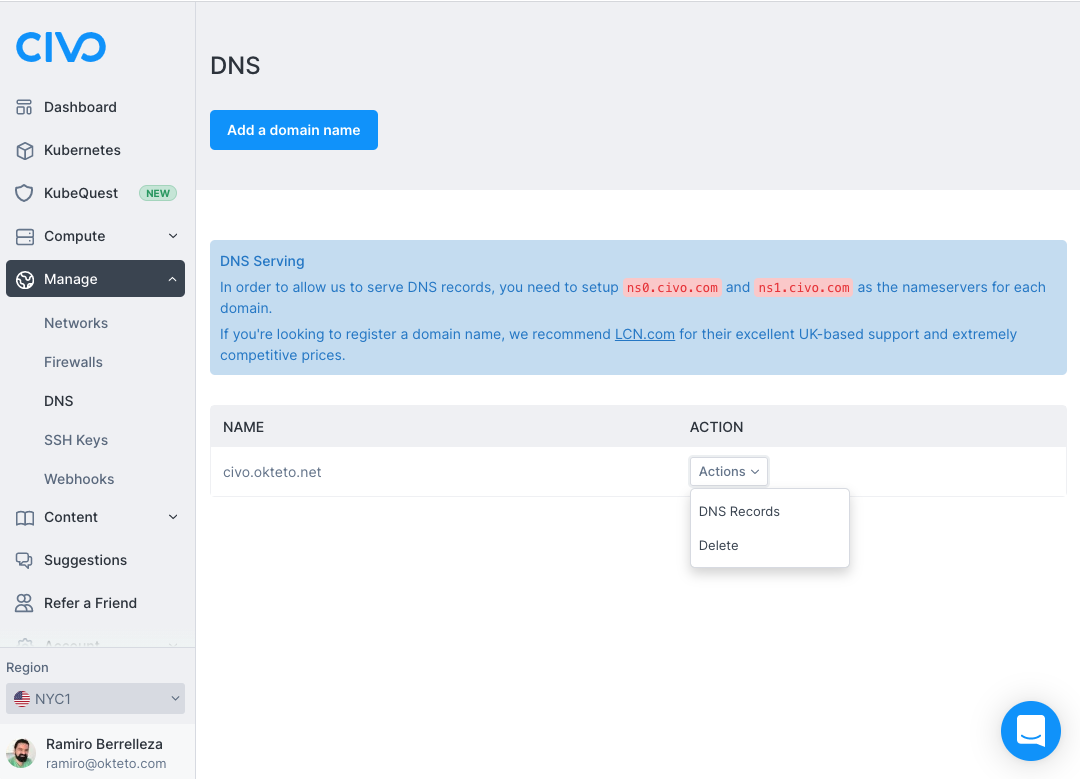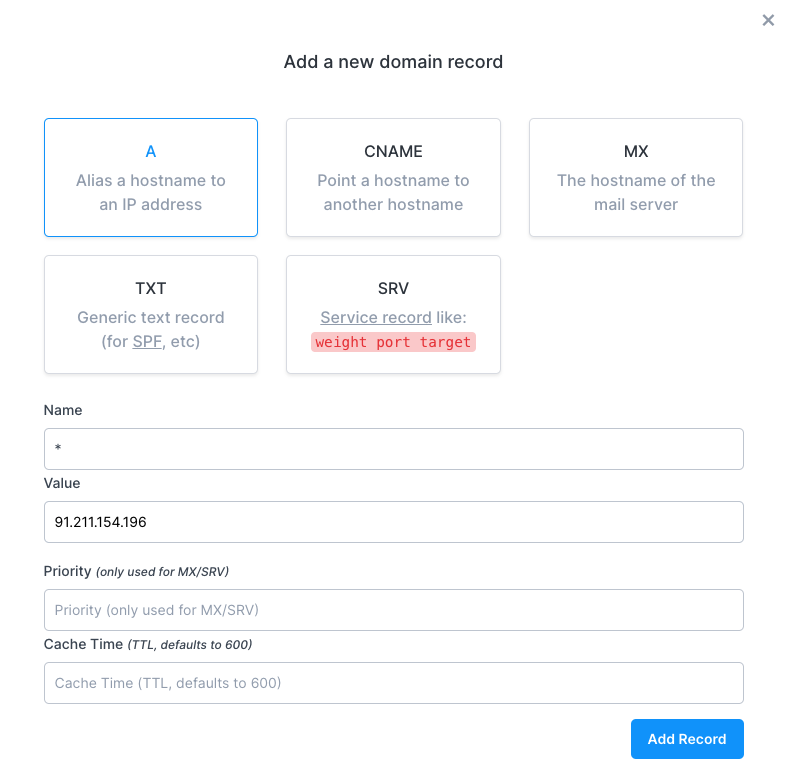Civo
This guide will show you how to install Okteto onto Civo's Kubernetes Service.
Requirements
In order to fully install Okteto, you'll need the following:
- A subdomain to which you can add a wildcard DNS record
- A Kubernetes cluster
- A working installation of kubectl
- A working installation of Helm v3 (v3.8 or higher)
- An Okteto License (optional)
Subdomain
You'll need sufficient access to a subdomain to add a wildcard DNS record, such as dev.example.com. By default, all endpoints created by Okteto for your development environments will be exposed on the wildcard subdomain you choose.
This guide assumes your domain is registered in Civo DNS. You can use any DNS service you prefer, but this guide focuses specifically on Civo DNS.
Deploy a Kubernetes cluster
If you are not familiar with this step, we recommend that you follow Civos's cluster creation guide.
To get started with Okteto, we recommend that you create a Kubernetes cluster with the following configuration:
- 3 large nodes
- Default network
- Without Traefik (you'll need to remove it from the default apps)
Our installation guides assume Okteto will be running in a dedicated cluster. We recommend contacting our team if you plan on installing Okteto in a cluster with other workloads.
Installing kubectl
Follow the official documentation for installing kubectl. Once installed, configure kubectl to talk to your new cluster.
Installing Helm v3 (v3.8 or higher)
Follow the official documentation for installing the latest release of Helm v3 (v3.8 or higher).
Adding the Okteto Helm repository
You'll need to add the Okteto repository in order to be able to install Okteto:
helm repo add okteto https://charts.okteto.com
helm repo update
Getting your Okteto License
Okteto is free for up to 3 users without a license.
You can also sign up for our free trial, which supports up to 30 users for a month.
Installing Okteto
Configuring your Okteto instance
Download a copy of the Okteto Civo configuration file, open it, and update the following values:
- Your
license(optional) - A
subdomain - Your cluster's API server endpoint
For example:
license: 1234567890ABCD==
subdomain: dev.example.com
cluster:
endpoint: "https://35.205.100.149"
Installing your Okteto instance
Install the latest version of Okteto by running:
helm install okteto okteto/okteto -f config.yaml --namespace=okteto --create-namespace
You can also install a specific version by including the
--versionargument.
After a few seconds, all the resources will be created. The output will look something like this:
Release "okteto" has been installed. Happy Helming!
NAME: okteto
LAST DEPLOYED: Thu Mar 26 18:07:55 2020
NAMESPACE: okteto
STATUS: deployed
Retrieve the Ingress Controller IP address
You can use kubectl to fetch the address that has been dynamically allocated by Civo to the NGINX Ingress you've just installed and configured as a part of Okteto:
kubectl get service -l=app.kubernetes.io/name=ingress-nginx,app.kubernetes.io/component=controller --namespace=okteto
The output will look something like this:
NAME TYPE CLUSTER-IP EXTERNAL-IP PORT(S) AGE
okteto-ingress-nginx-controller LoadBalancer 10.245.147.23 91.211.154.196 80:30087/TCP,443:31799/TCP,1234:31412/TC 2m
You'll need to create a wildcard DNS record for this IP. To do that, log in to your Civo account, click on the "Manage" option on the left part of the dashboard, and click on "DNS".
Select the domain you're using for your Okteto instance, and click on the "DNS Records" option.

Click on the "Add a Record" button and use the following values:
- Type: A
- Name: *
- Value: Your EXTERNAL-IP

Click on the "Add Record" button to create the DNS record.
Sign in to your Okteto instance
After a successful installation, you can access your Okteto instance at https://okteto.SUBDOMAIN. Your account will be automatically created as part of the login process. The first user to successfully login into the instance will be automatically assigned the administrator role.
Important: The default installation is not recommended for production use. We highly advise following the steps outlined in the Admin Dashboard before giving your team access to your Okteto instance.
The default installation is all that's required to follow our getting started guide.
Just remember to replace https://cloud.okteto.com by https://okteto.SUBDOMAIN and you will be good to go!